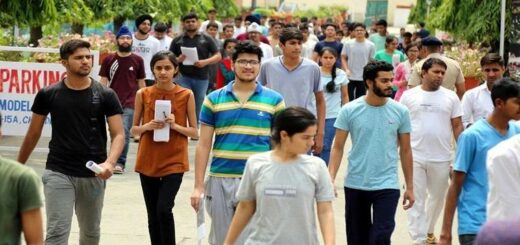National Current Affairs – UPSC/IAS Exams- 16th December 2019
Northeast amendment Citizen Amendment Bill
Topic: Polity
In News: The outburst against the Citizenship Amendment Bill, or CAB, (now an Act, or CAA) in the Northeast is different. Unlike the objections to the CAA everywhere else in the country which is about the discriminatory and seeming Islam-phobia attributes of the new law they are bewildered that in the Northeast, CAB is seen as a threat to survival.
More on the Topic:
- Threat to Vulnerable Languages: As by UNESCO’s definition of endangered languages, all of the 200 and more languages spoken in the Northeast, with the exception of Assamese and Bengali, are in the vulnerable category. Even in the case of Assamese, though it is the language of the majority in the State with about 15 million speakers (Census 2011), they are still a tiny minority when the larger region of Bangladesh, Bengal and Assam is considered. Bengali speakers in Assam total about 9 million (Census 2011); however, neighbouring Bangladesh alone has 164 million speakers of the same language. The fear in Assam of being overwhelmed by an unceasing influx of people from Bangladesh therefore is nothing beyond legitimacy.
- Issue of marginalisation: The presence of seven lakh Rohingya refugees in Bangladesh close to the Chittagong Hill Tract, is making small ethnic Buddhist communities such as the Chakmas and Marmas uneasy: they could become marginalised if the refugees were to be resettled among them(This is the case of Bangladesh, written here to give clarity ). These are tragedies that are indeed multi-layered but often only one is made visible.
Background:
- Provoked and compelled by the imperial ambition of Burmese Konbaung ruler, King Bagyidaw, whose army invaded and occupied Assam and Manipur starting 1819, the British intervened and took over Assam (which then was virtually the entire Northeast with the exception of Tripura and Manipur) and formally annexed it in 1826 after the signing of the Treaty of Yandabo to make it a part of its Bengal province.
- Manipur was left as a protectorate state. As Assam was at the time unfamiliar with British colonial administration and education, educated Hindu Bengalis from neighbouring Sylhet became the favoured agents to fill the colonial bureaucracy and carry forward the colonial project.
- It is from this position of power, that Hindu Bengalis dominated Assam’s political as well as cultural spheres, at one point even having Bengali declared the official language of Assam on the plea the latter is a dialect of the former.
- This was predicted to ultimately provoke a reaction from the Assamese middle class as it came of age. There was also the Muslim Bengali peasantry which migrated to Assam, but those who arrived before politics in India began polarising on religious lines, found it much easier to assimilate and adopt the Assamese identity.
Recent Times:
- When Assam was separated from Bengal and made a separate chief commissioner’s province in 1874 and then in 1912 after Curzon’s 1905 partition of Bengal was withdrawn, a reluctant Sylhet(is a metropolitan city in northeastern Bangladesh now) which felt it was better off as part of Bengal, came to be affiliated with the new province.
- At the time of Partition, the equation changed and Sylhet’s chance of remaining with India was for it to be treated as a part of Assam.
- The then Assamese leadership refused this as Assam would then have become Bengali majority. Sylhet had to face a referendum separately and by a thin Muslim majority was awarded to Pakistan. The current migration issue is also a consequence of this bitter politics of antagonism of the past.
Source: Hindu
Topic: Government Polices
In News: Three years after a pan-India maternity benefit programme promising ₹6,000 to new mothers was first announced, the law has led to single women and young brides being left out of its purview.
More on the Topic:
- The Pradhan Mantri Matru Vandana Yojana (PMMVY) give a benefit of ₹5,000 to pregnant and lactating mothers for the birth of the first child.
- This would be disbursed in three installments upon meeting several conditionalities — registration of pregnancy, at least one ante-natal check-up, registration of child birth and vaccinations.
- The remaining cash incentive of up to ₹1,000 is to be given under a separate scheme called the Janani Suraksha Yojana so that on an “average” women get a total sum of ₹6,000. The objective is to compensate women for wage loss due to child birth.
Concerns:
- Registration for the scheme requires an applicant to provide her husband’s Aadhaar details along with her own, affecting single women which include unwed mothers, deserted wives and widows.
- Moreover, a mother seeking benefits needs to provide proof of address of her marital home, which proves challenging for a newlywed expecting a child and often residing in her natal home during pregnancy. She is then forced to go from pillar to post to claim benefits.
- The requirement that the applicant has to be at least 19 years old also leaves out younger brides, who hesitate in getting their marriages registered as the legal age of marriage is 18 years. “30-35% first-time mothers are under the age of 18 years.
- The Right to Food Campaign (Uttar Pradesh) says women have to pay a hefty bribe during the application process.
- The lengthy documentation work includes filling up six documents totaling 32 pages an application form to be filled for each of the three installments, an application for linking the Aadhaar card with bank account, another one for linking the Aadhaar card with post office account and a feedback form.
- Applicants have to also submit at least nine other documents for verification.
Way Ahead:
- There is a need for reviewing the scheme and making it universal by removing restrictions on the number of children as well as including all women, whether they are in the formal or informal sector, engaged in paid or unpaid work.
- The sum promised should also be at least on par with minimum wages for women in self-employment, unpaid work, or working for less than minimum wages.
Source: PIB
Android vulnerable to cyberattack
Topic: Science and Technology
In News: The Union Home Ministry has sent an alert to all States warning them about the vulnerability of the Android operating system to a bug called ‘StrandHogg’ that allows real-time malware applications to pose as genuine applications and access user data of all kind.
More on the Topic:
- While all versions of Android, including Android 10, are vulnerable to this bug, it may not be apparent to the affected users that malware applications are already on board their device.
- These malware can then potentially listen to their conversations, access photo album, read/send messages, make calls, record conversations and get login credentials to various accounts.
- This apart, things that such malware can access include private images, files, contact details, call logs, and location information.
Source: Hindu
Topic: Art and Culture
In News: Two tourist visitor centres set up at Ajanta and Ellora caves by the Maharashtra government have been shut due to their pending dues worth ₹5 crore.
More on the Topic:
- Ajanta Caves: Ajanta caves are a series of Buddhist caves located in Aurangabad district, Maharashtra. This site is declared a World Heritage Site by UNESCO. It encompasses both Theravada (Hinayana) and Mahayana Buddhist traditions. The Ajanta caves preserve some of the best masterpieces of Buddhist art in India.
- There are a total of 29 caves (all buddhist) of which 25 were used as Viharas or residential caves while 4 were used as Chaitya or prayer halls.
- The caves were developed in the period between 200 B.C. to 650 A.D.
- The Ajanta caves were inscribed by the Buddhist monks, under the patronage of the Vakataka kings – Harishena being a prominent one.
- Reference of the Ajanta caves can be found in the travel accounts of Chinese Buddhist travellers Fa Hien (during the reign of Chandragupta II; 380- 415 CE) and Hieun Tsang (during the reign of emperor Harshavardhana; 606 – 647 CE). .
- Ellora Caves: It is located nearly 100 Kms away from Ajanta caves in the Sahyadri range of Maharashtra. It is a group of 34 caves – 17 Brahmanical, 12 Buddhist and 5 Jain.
- These set of caves were developed during the period between the 5th and 11th centuries A.D. (newer as compared to Ajanta Caves) by various guilds from Vidarbha, Karnataka and Tamil Nadu.
- That is why the caves reflect a natural diversity in terms of theme and architectural styles. The Ellora complex was designated a UNESCO World Heritage site in 1983.
- The most remarkable of the cave temples is Kailasa (Kailasanatha; cave 16), named for the mountain in the Kailasa Range of the Himalayas where the Hindu god Shiva resides.
Source: Hindu
Sustainable Development Cell for Coal Mining
Topic: Environment and Ecology
In News: The Ministry of Coal has decided to establish a ‘Sustainable Development Cell (SDC)’ in order to promote environmentally sustainable coal mining in the country.
More on the Topic:
- It will advise, mentor, plan and monitor the mitigation measures taken by the coal companies for maximising the utilisation of available resources in a sustainable way, minimising the adverse impact of mining and mitigating it for further ecosystem services and will act as nodal point at Ministry of Coal level in this matter.
- It will also monitor the effective utilisation of the Mine Closure Fund and environment budgets of different coal companies.
- The SDC will focus on land amelioration and afforestation, air quality, emission and noise management, mine water management, sustainable overburden management, sustainable mine tourism, planning and monitoring.
Source: Hindu
Government Instant Messaging System (GIMS)
Topic: e-Governance
In News: The government is testing a prototype of an Indian equivalent of popular messaging platforms, such as WhatsApp and Telegram, for secure internal use. Codenamed GIMS or Government Instant Messaging System, the platform is in the pilot testing stage across some states, including Odisha.
More on the Topic:
- Designed and developed by unit of National Informatics Centre (NIC), GIMS is being packaged for employees of Central and state government departments and organisations for intra and inter organisation communications.
- It is being developed as a secure Indian alternative without the security concerns attached with apps hosted abroad or those owned by foreign entities. Like WhatsApp, GIMS employs end-to-end encryption for one-to-one messaging.
- The launch of the new app comes amid the recent controversy over the WhatsApp breach that some Indian users’ mobile devices were targeted through a spyware called Pegasus.
- GIMS is being touted as a safer bet as the platform has been developed in India, the server hosting it is installed within the country and the information stored would be in government-based cloud — NIC-operated data centres that are only meant for captive use by the government and its departments.
- Besides one-to-one messaging and group messaging, there are specific provisions in GIMS for documents and media sharing in keeping with the hierarchies in the government system.
Source: Hindu















